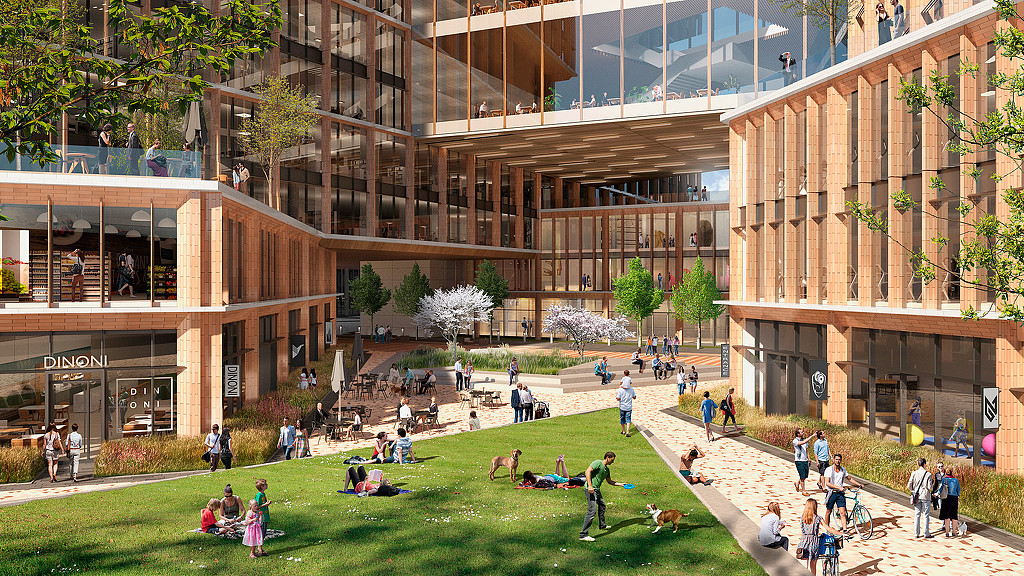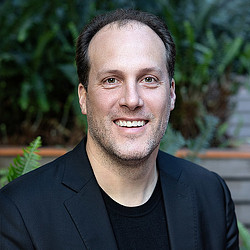Rebuilding Community in the Post-Pandemic World
December 08, 2020 | By Ben Tranel
The pandemic has taught us how to come together virtually, but many of us have lost the sense of community and belonging that’s inherently cultivated through in-person, face-to-face interactions. With encouraging news of COVID-19 vaccines and a good sense of what we’ve learned from working remotely, we now have an idea of what the future of work will look like: a hybrid model of in-office and remote work. When we can return to the office and resume other in-person activities, creating places for people to spend time together and rebuild community — not just in the workplace, but in every aspect of our daily lives — will be more important than ever.
We all belong to a variety of different communities — physical and virtual — but ultimately, we eventually need to come together again in person. And when we do, we’ll want to look for what we have in common. How do we rebuild and restore a sense of community after being physically apart? Across industries, brands and employers are trying to cultivate belonging, purpose, and meaning that people crave. But as we shift to a hybrid future, we see a set of nested problems: How can we rebuild the workplace that sparks innovation, connection and community? How do we ensure those connections extend beyond the workplace? And how does one office or building fit into the newly reshaped city fabric? It starts by connecting people at the human scale, a few people at a time.
The human scale: the new hybrid workplace.With the shift to remote work, many people are wondering what impact this will have on the future of workplace real estate. We’ve confirmed, through our Workplace Survey data, that offices will still remain an important part of the workplace experience; and instead of questioning whether we’ll need more or less real estate, we now understand that this is an opportunity to use real estate differently, more intelligently. In our latest U.S. Workplace Survey 2020 findings, conducted in summer and early fall, we found that over half of U.S. workers would prefer a hybrid work model where they are in the office for a portion of the work week. Their reasons for returning to the office, however, are largely weighted towards collaboration and cultural connection, resulting in a reevaluation of how space types are allocated within the office.
If we translate this desire for collaboration and person-to-person connection into types of space, we can see the shape of a hybrid workplace. Consider the “front porch,” a new feature of the open office neighborhood, where colleagues greet each other in-person and connect with remote colleagues via virtual dashboards. Or a tech-enabled “connected kitchen,” where coworkers can hang out, grab coffee, virtually chat with people working from home, and feel connected to a sense of purpose and community that extends well beyond the physical workplace.
The building scale: the building and the ground plane.To rebuild the communities that support the urban core and central business districts, we can explore what a “front porch” looks like at an architectural scale, how it might be extended down to the sidewalk in order to engage neighborhoods and the city at large. Perhaps our greatest opportunity lies in reimagining the ground plane of our office buildings and transforming single-use storefronts into multi-use destinations. With new ground floor programs, buildings can extend their operating hours and become a more integral part of the community. We can design open, accessible spaces and programs that bring people and local organizations into the building, or conversely, extend company culture from the workplace to the street — creating valuable workplace amenities at the edge to be enjoyed by everyone — not just the daytime workforce.
For example, when designing CityView in the heart of downtown San Jose, California, Gensler worked closely with the city and Jay Paul Company to design a solution that would open the ground plane next to Cesar Chavez Plaza, the oldest public open space in California, by creating a connected mixed-use campus that enhances the character of the city. The building’s design will elevate the tenant experience while activating the streetscape and engaging the public realm.
The city scale: the central business district and the city at large.According to the Gensler Research Institute’s City Pulse Survey, many people in global cities like New York, San Francisco, London, and Singapore were contemplating moves before the pandemic, largely due to affordability concerns. We found that as economies began to reopen, people started to resume the activities that they wanted to experience in person again, where virtual alternatives couldn’t compare, such as visiting friends and family, or visiting public open spaces. As we emerge from the pandemic, community building will be an essential part of cities’ revival. When people need to connect, spaces that allow for physical proximity will more often than not win out over virtual communities.
There’s a radical reenvisioning of the public urban realm currently underway, creating true urban places where people can connect and community is restored. We’ve seen creative interventions, such as parking lots and abandoned spaces transformed for community use. The quick implementation and propagation of slow streets and parklets that have taken shape over the past several months will last beyond the pandemic. But as the Slow Streets Movement has taught us, to truly design for inclusivity and equity, we need to first address inequities in our communities, while also reframing what true community engagement means.
A century ago, the 1918 pandemic was followed by a period of rapid growth and dynamic social upheaval, but it was growth that affected many communities in drastically different ways. As we rebuild our sense of community at all scales, we can leverage this current period of disruption to usher in a new era of positive transformation — one that ensures a more inclusive society where everyone benefits.
By grounding our designs in the human experience, we can transform our workplaces, buildings, and ground planes into hubs for connection and engagement that extend beyond walls into the surrounding city and community. The steps we take now to rebuild and restore community at the workplace, building, and city scale will test how we design our cities in the future.
For media inquiries, email .

